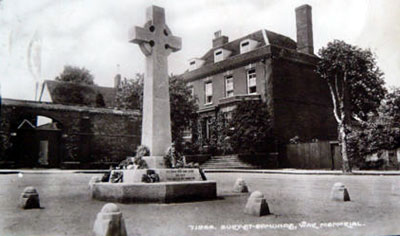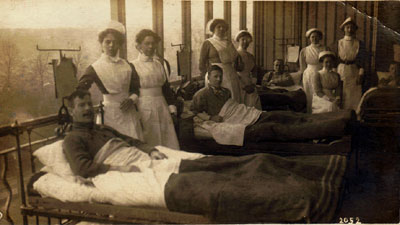
At first the normal hospital facilities took battle casualties. But there was soon an overwhelming need for more facilities and local mansions were requisitioned wholly, or in part, to be converted to hospitals. Picture in West Suffolk Hospital by Walton Burrell, negative 2052. (Gerald Brown collection.)
|
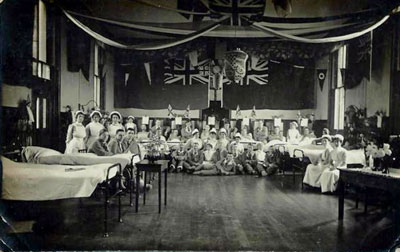
Hospital Ward with casualties at Bury St Edmunds. Wounded men inevitably had dirty and damaged uniforms which needed replacing, so they were issued with a special uniform called "Hospital Blues". This was thought to maintain discipline, but there was a restricted range of sizes, and were not generally liked. |
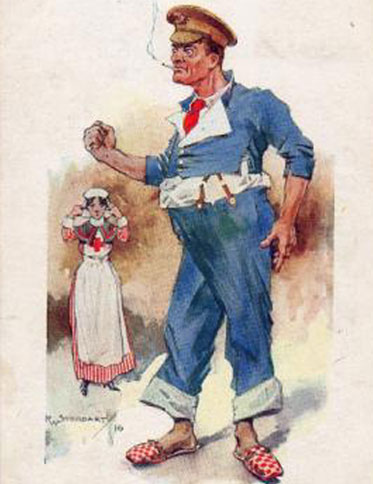
This comic postcard clearly shows the issues surrounding the uniform known as 'Hospital Blues'. Issued to men in hospital, the uniform was coloured blue, with a white lining, but had no pockets and was ill fitting. Hospital uniform included a red tie and a white shirt as shown here. |
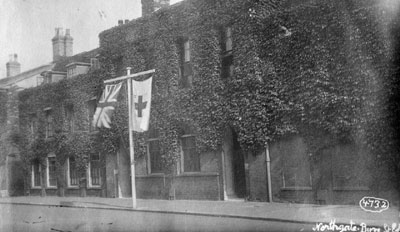
This Red Cross hospital was set up in Northgate Street, Bury St Edmunds. This photograph shows it during 1917. The Record Office description reads, " Photograph "Closed 2 January 1923" View of the hospital with flag pole flying Union Jack and Red Cross".
|
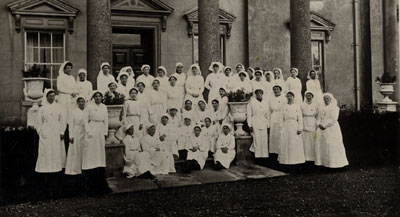
Great Saxham Hall was taken over for nursing purposes. Here we see some of the nurses at Saxham Hall on the front portico. |
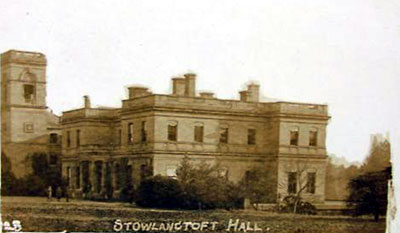
Stowlangtoft Hall was another stately home taken over for the military. |
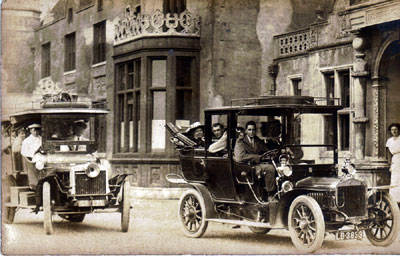
Hardwick House was not totally commandeered for use by troops, and continued to be the home of George Gery Milner-Gibson-Cullum. The grounds of Hardwick House were used for training purposes, and the front lawns turned into hay meadows for forage for horses and other animals. Other parts of the estate were farmed for food. Members of the Signals Regiment seem to have been based at Hardwick, and wounded soldiers were often entertained there on days out from Hengrave Hall Hospital. Cullum allowed convalescent troops to wander in the grounds of Hardwick House and often invited parties over for tea, as seen here. (Gerald Brown collection.)
|
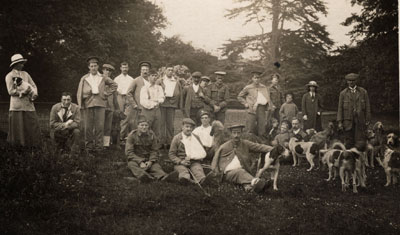
Hengrave Hall became a hospital for the wounded. This postcard shows recuperating wounded soldiers at Hengrave Hall near Bury St Edmunds, which was used extensively in WW1. They are in the company of some people apparently named on the rear of the card, along with the words "Otter Hunt". I think they read as Mrs Cartmell, G Mizen, Mr Paley, Mrs Price and family. The reverse is also stamped Photo : W R Burrell, Fornham St Martin, Suffolk, negative 1101.
|
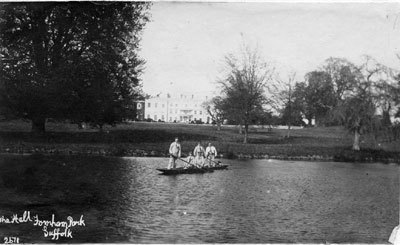
This picture shows five wounded soldiers enjoying a punt on the lake in Fornham Park, Suffolk. It bears the date 1st May 1916, and Fornham Hall is visible in background.
|
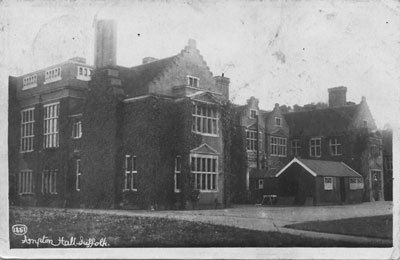
Ampton Hall was one of the larger houses turned over to hospital facilities for wounded troops. There are many pictures of life at the Hall when it was a hospital. |
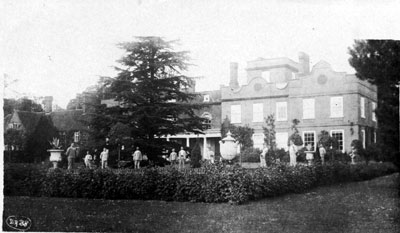
One of the few pictures at Ampton hospital not taken by Walton Burrell. Here we see the garden. |
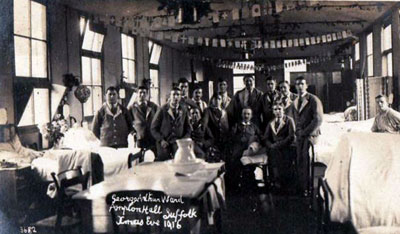
Casualties at Ampton Hall, George Arthur Ward, Christmas Eve 1916. The white lapels of 'hospital blues' can be clearly seen. |
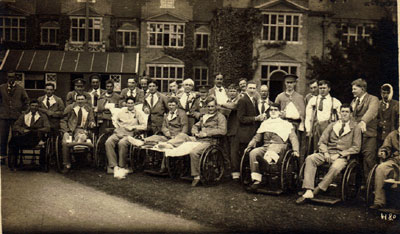
One of many views of patients at Ampton Hall taken by Walton Burrell. (Gerald Brown collection.)
|
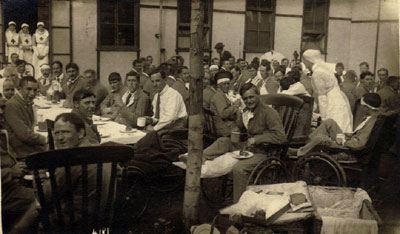
One of many views of patients at Ampton Hall taken by Walton Burrell. (Gerald Brown collection.)
|
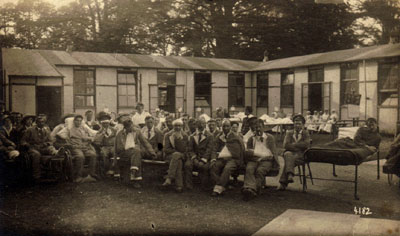
One of many views of patients at Ampton Hall taken by Walton Burrell. (Gerald Brown collection.)
|


